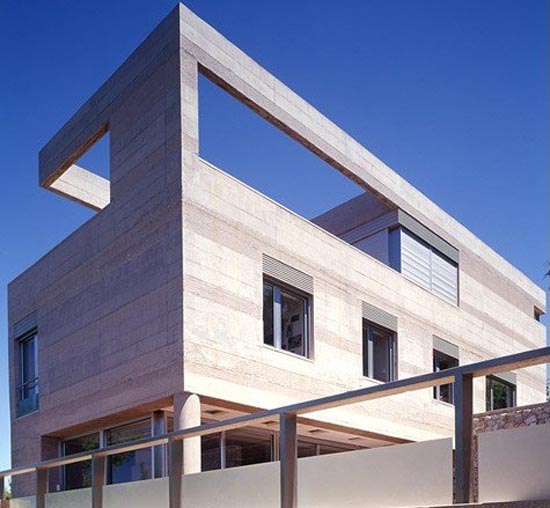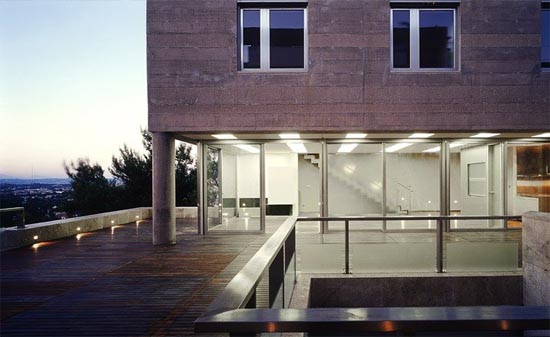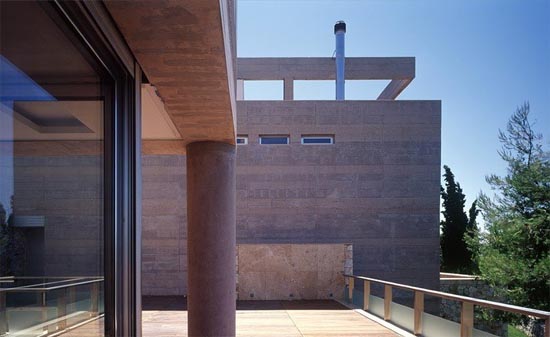Athens, Natural Stone and Concrete Ekali Houses in Amphitheatric Position
www.stonexp.com
2010-09-21 14:04:03
Popularity Index:0
Source:Internet
|
Design-wise the volumes were kept simple and Ktenàs respectively chose to work with few and carefully selected materials – natural stone and concrete – in order to create a stronger connection between the houses, their outdoor areas and the surrounding nature. The stone used for the buildings’ retaining walls was in fact reclaimed from the site’s excavation, while the structures’ upper parts are made of artificial stone made of reinforced concrete. Built on a slope, the complex should also take advantage of its amphitheatric position to enhance a strong indoor/outdoor relationship and frame beautifully the wide views below. The more public parts of the house – living and dining areas – are situated on the same level as the outdoor area, so they can open up in the summer and unite all structures and gardens into a single flowing space. This way, the owners can benefit from the striking vistas towards the Attican valley, leading down to the port of Piraeus and the Saronic Gulf, from every corner of the complex. Set on the northern limits of Athens in the sophisticated leafy suburb of Ekali, this housing complex consists of three new builds and is one of the latest residential works by Athens-based architect Nikos Ktenàs.
That the outdoor spaces between the buildings are the most important aspect of this construction.’ The concrete structures are placed perpendicularly towards the street and the surface’s inclination, to allow for more outdoor courtyards and gardens to be formed in-between. Clear glass and aluminium frames were used for the openings and the interiors feature continuous wooden floors, which expand to the outside decks and terraces, underlining once more the connection between the inside and outside areas of the Ekali complex. Since the new houses all belong to the same family, the clients wanted them connected through common outdoor spaces, so the exteriors became very important and the buildings were strategically positioned in particular places within the plot.
   |



